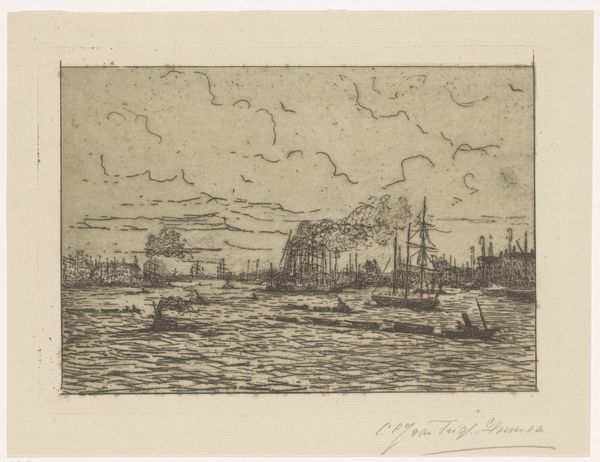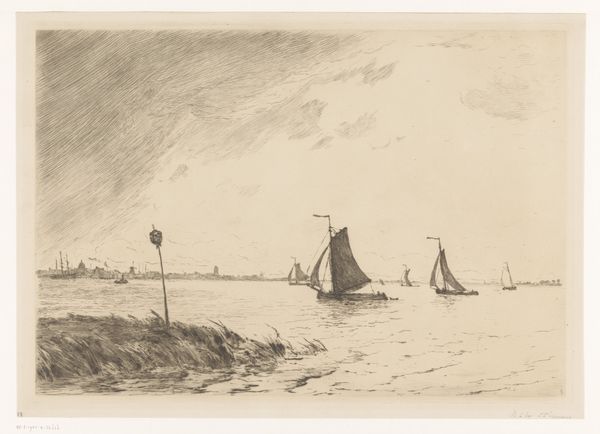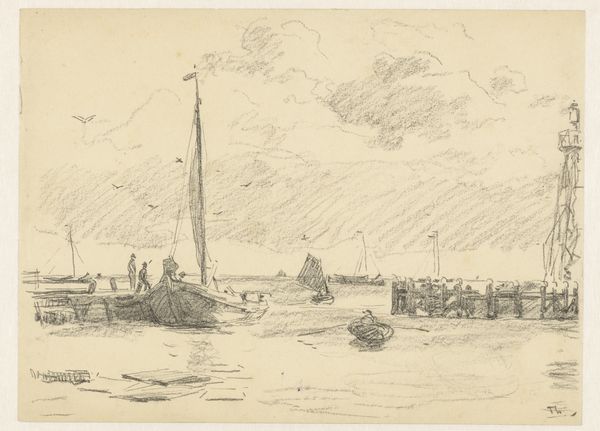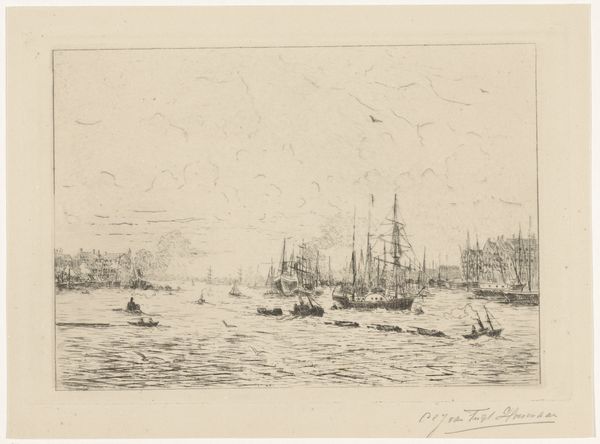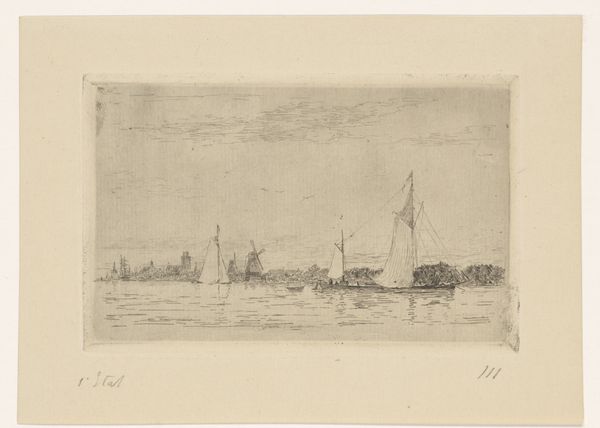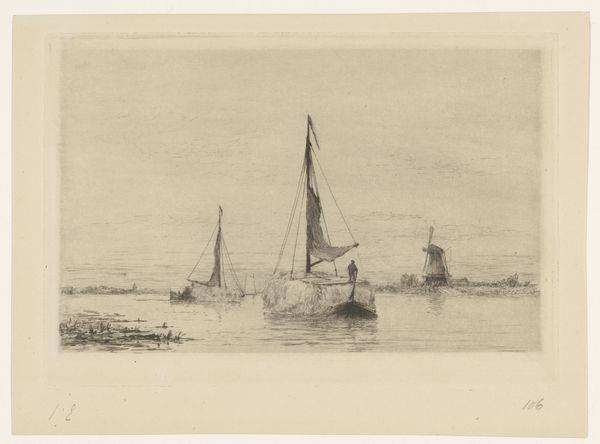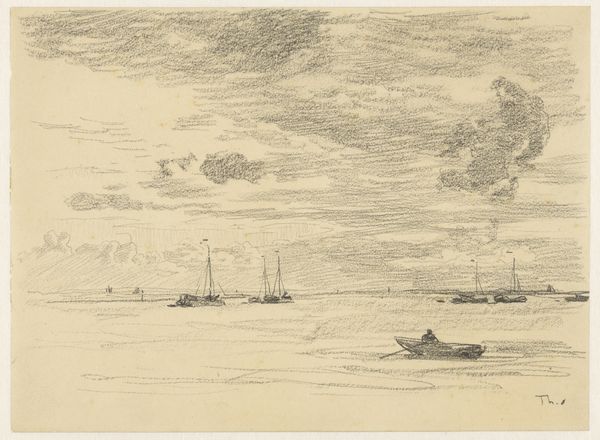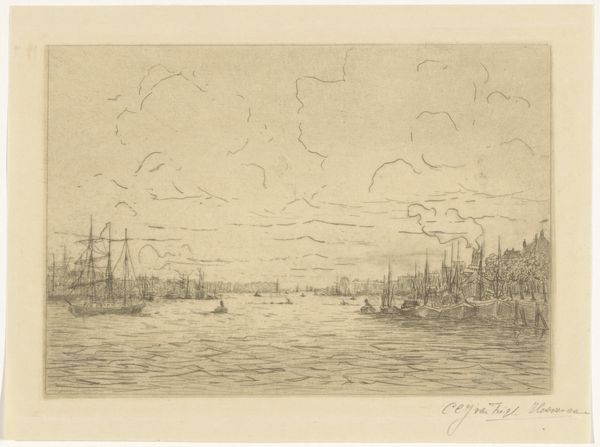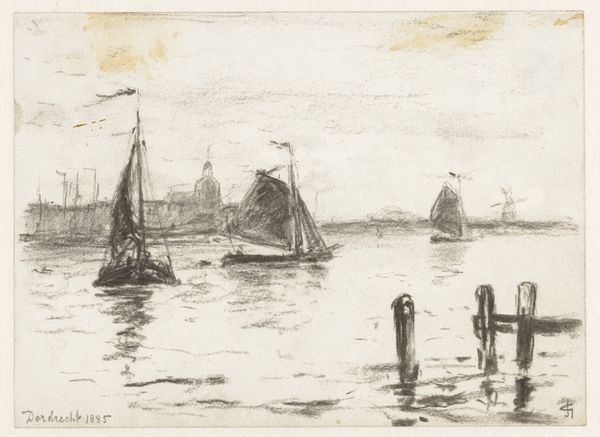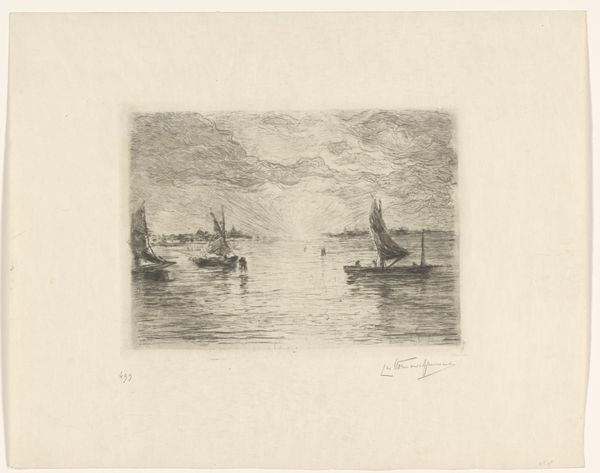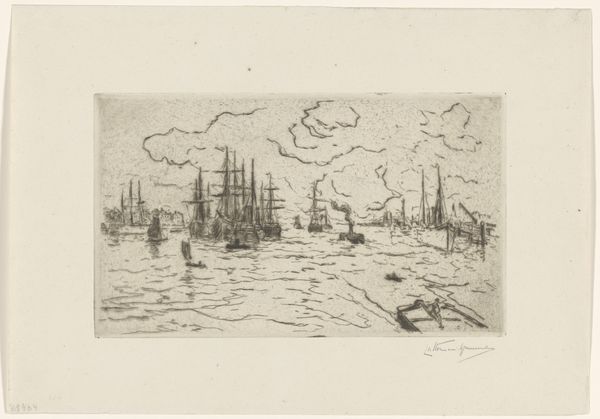
drawing, print, etching, ink
#
drawing
#
ink drawing
# print
#
pen sketch
#
etching
#
landscape
#
ink
#
line
#
realism
Dimensions: height 103 mm, width 150 mm
Copyright: Rijks Museum: Open Domain
Curator: This etching, "Zeilschepen op een rivier," or "Sailing Ships on a River," by Frederika Henriëtte Broeksmit, dates from between 1885 and 1931. Editor: There's an evocative stillness despite the subject matter. The soft monochrome and feathery lines really capture the play of light on the water and create a hazy atmosphere. Curator: Broeksmit uses line to establish depth, yes, but I'm more interested in how water often represents the subconscious. Here, we see ships that, historically and symbolically, speak to journeys, exploration, and the negotiation of the unknown aspects of ourselves and the world around us. Editor: Agreed, though what strikes me first is the craft—etching being an intensive process of layering acid to bite into the metal plate. Think of the labor involved in each delicate line! How does the process itself affect the image's feeling? It couldn't have been quick or impulsive. Curator: Perhaps the labor-intensive process speaks to a kind of enduring legacy? A visual metaphor for persistence and memory? The clouds mirrored in the water may further symbolize ephemerality against the sturdiness of the ships themselves. A dialogue of permanence and change, almost archetypal. Editor: Or simply about depicting reality for what it is. The materials, the mark-making…this is about transforming lived experiences of industrial harbor scenes, of wind and weather, into something lasting through careful manual work and chemistry. The etching itself embodies the very activity pictured here, which is itself industrious in character. Curator: A fine point. It’s intriguing to consider how even "realistic" depictions are laden with intentional choices and inherit meanings, no matter how subtle. Broeksmit prompts questions about navigation on inner seas, not only outer rivers. Editor: I like that reading. Considering how images of labor in art during the late 19th and early 20th centuries gained currency, it's interesting to consider what Broeksmit does, materially, in conjunction with the represented scene, for those viewers, even today. Curator: A perfect harmony, perhaps, in that blending of skill, labor, nature, and enduring human symbolism that draws us in so well. Editor: A blend reflected in how Broeksmit's mark-making and chosen medium mirror that harmony. Fascinating.
Comments
No comments
Be the first to comment and join the conversation on the ultimate creative platform.
